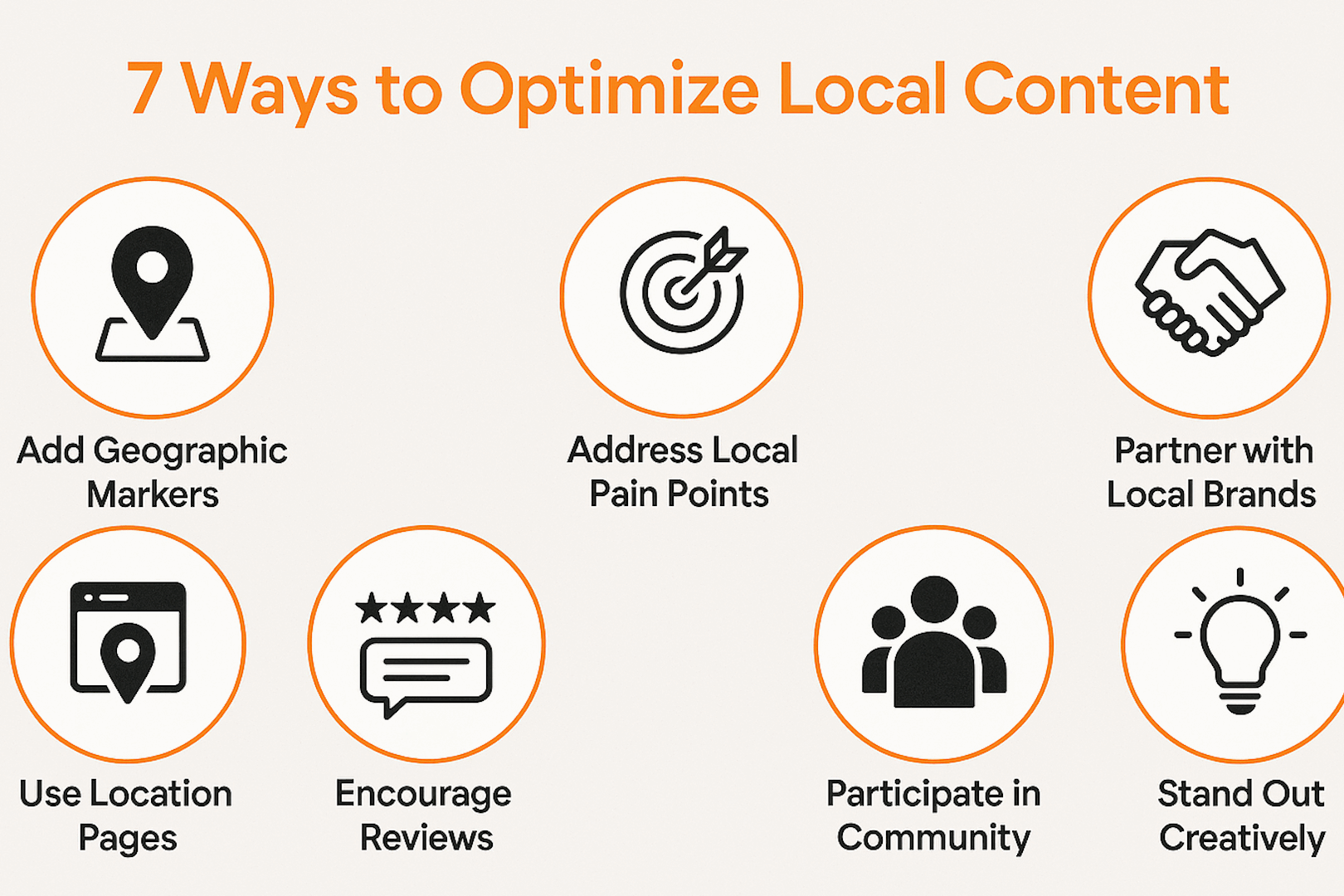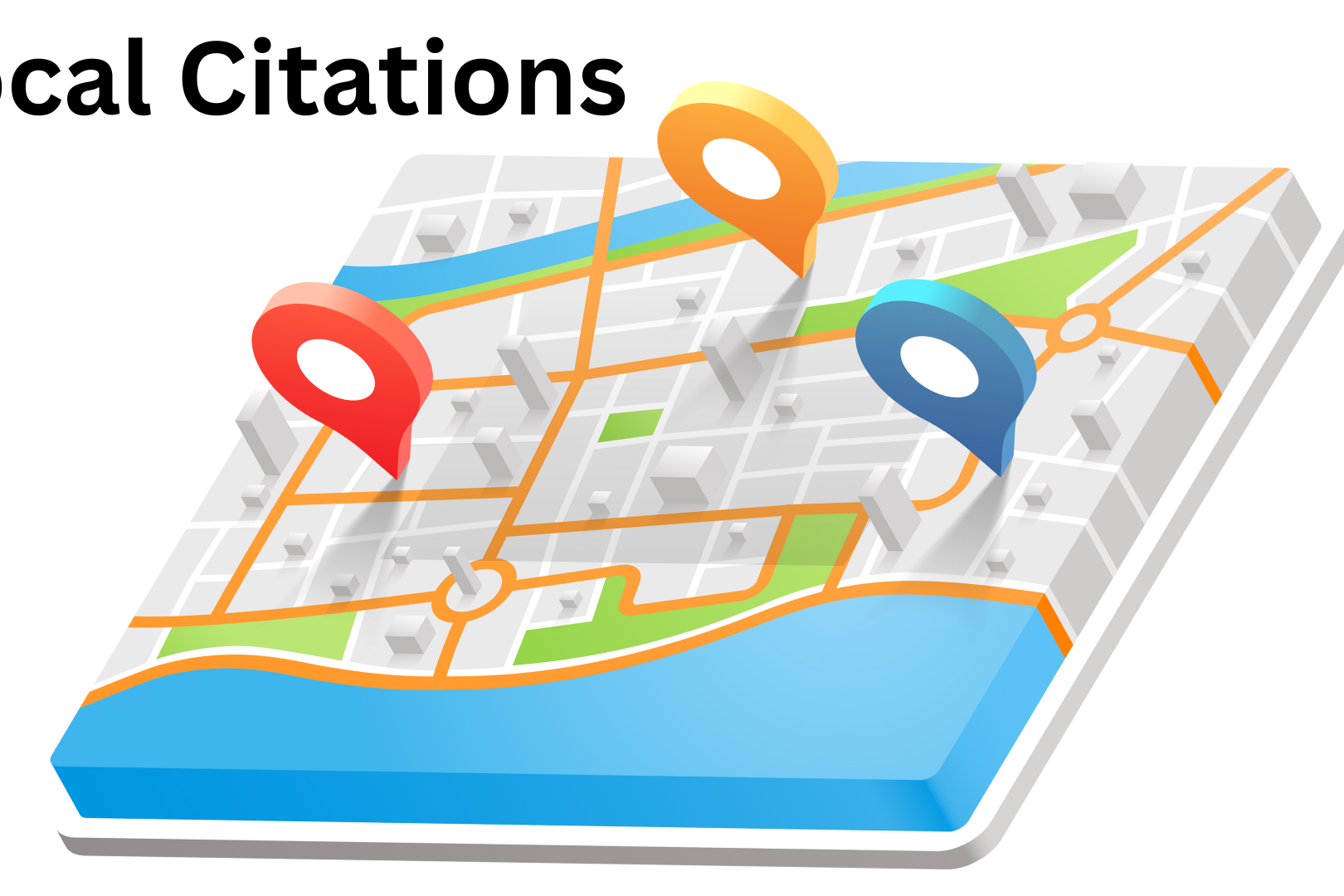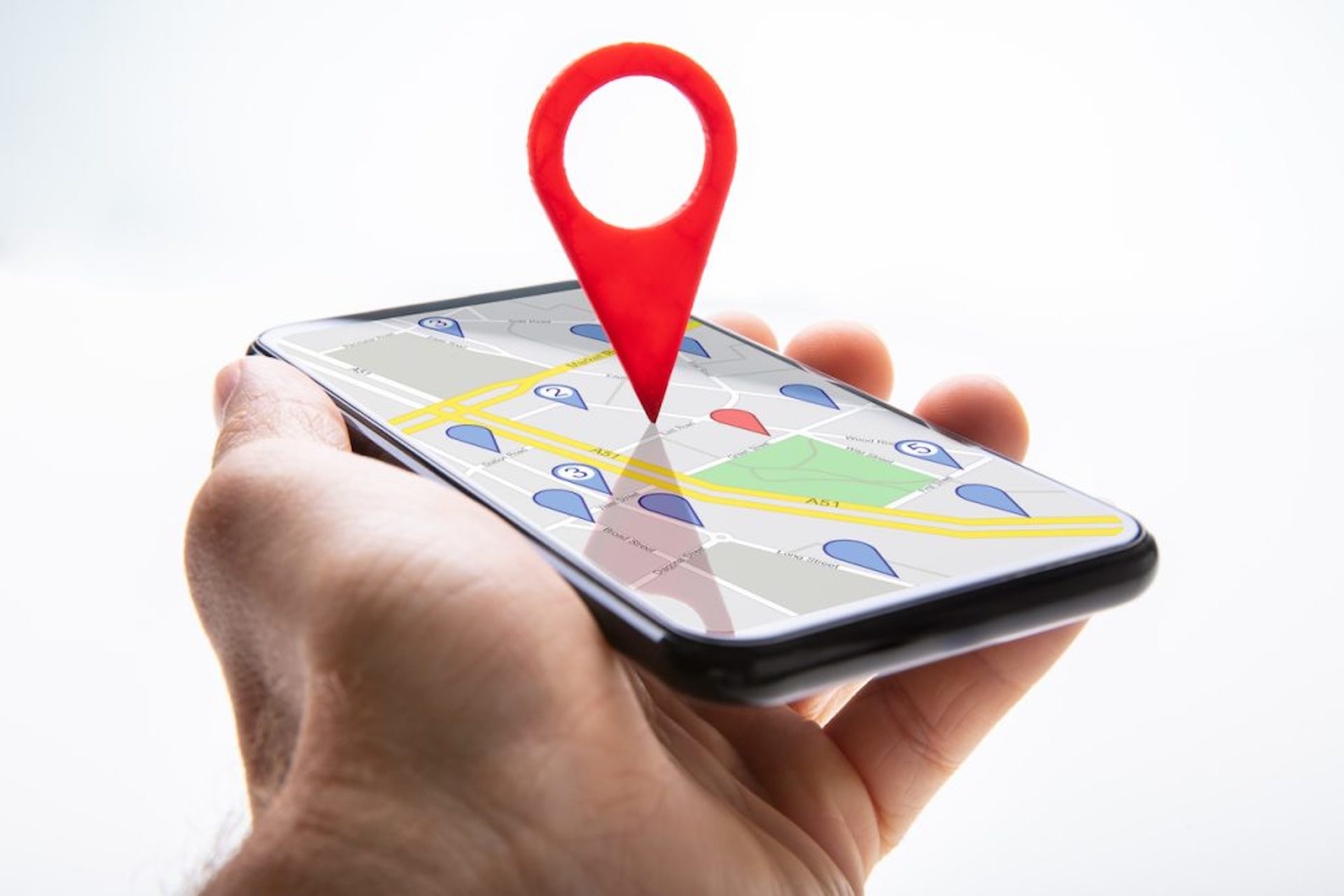Search engine optimization has long been one of the most effective lead generation channels for local businesses, but the rise of AI-powered search could change that in the future.
According to the Wall Street Journal, a whopping 5.6% of all search traffic over desktop browsers comes from AI-powered chatbots like ChatGPT and Perplexity.
A large chunk of AI-powered searches is strictly informative, but commercial searches are becoming an increasingly larger share of AI searches, prompting advertisers to sink billions into AI-advertising over the next four years (Reuters).
In just this year, we have witnessed traffic from AI platforms increase by over 1000% for several of our clients in the local pest control industry.
Local SEO is still king when it comes to Hyperlocal Lead Generation, but the earlier that local businesses start optimizing for AI searches (Generative Engine Optimization), the easier it will be to outrank the competition on these platforms.
Learn more about how Generative Engine Optimization is shaping local search and how service-based businesses can start ranking for
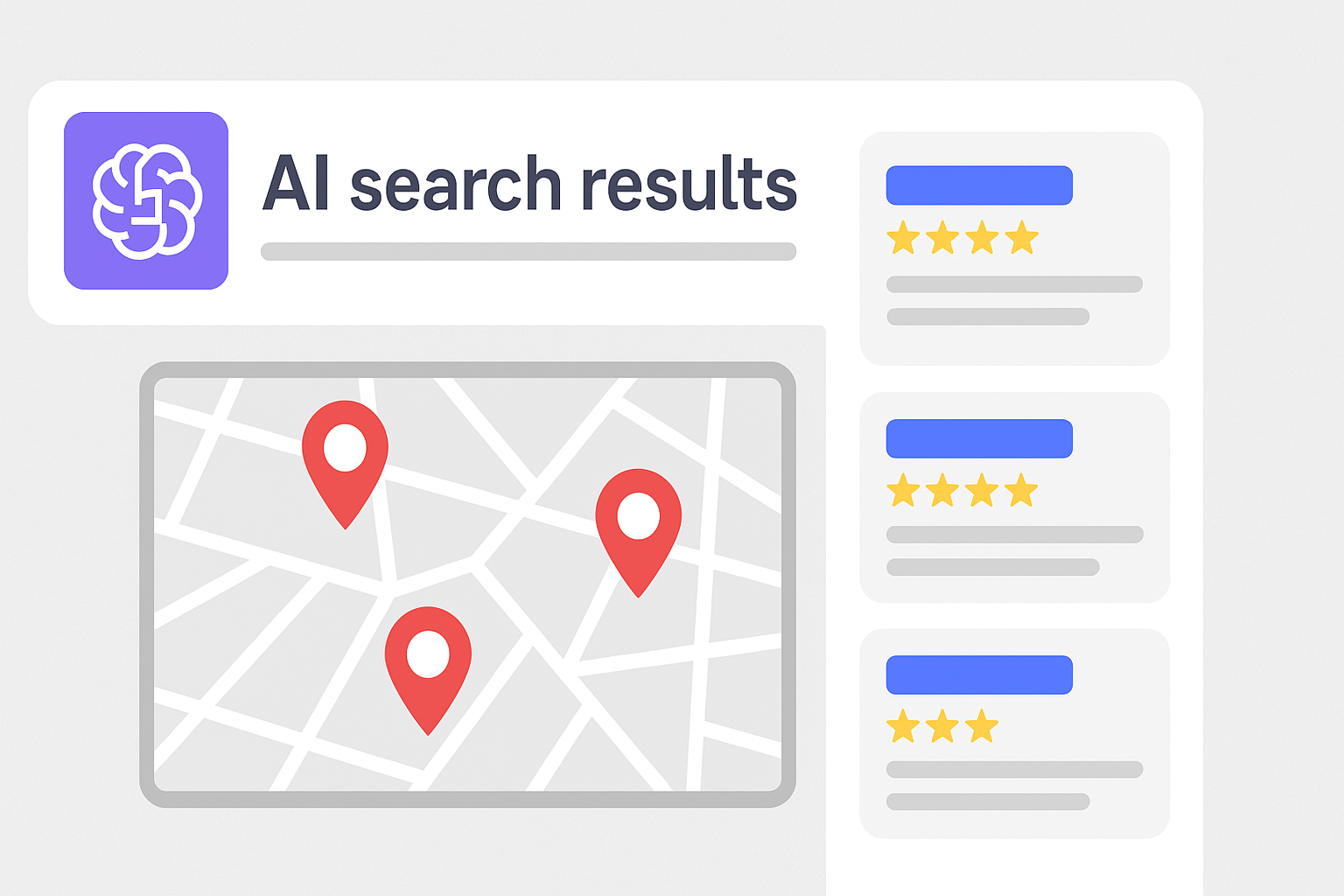
What Is Search Engine Optimization (SEO)?
Search Engine Optimization (SEO) is the process of improving your website so it ranks higher in traditional search engines like Google or Bing. SEO focuses on keywords, backlinks, and user experience to help users discover your business through organic listings.
Local SEO differs slightly from traditional SEO in that businesses can rank in traditional organic search results, as well as Map Pack results that display their Google Business Profile.
SEO is still the primary channel for local business growth, as an estimated 46% of searches on the platform are locally based (Forbes).
Beyond local SEO, there are several different aspects of SEO that impact search visibility, user experience, and keyword rankings.
- On-page SEO: Optimize titles, headings, and content for target keywords.
- Off-page SEO: Build authority through backlinks and citations.
- Technical SEO: Improve load speed, schema, and mobile usability.
- Local SEO: Optimize your Google Business Profile, reviews, and NAP (name, address, phone consistency).
What Is Generative Engine Optimization (GEO)?
Generative Engine Optimization (GEO) is the process of structuring your content so that AI systems cite, summarize, or feature it in generative search results. There are several different AI-powered platforms, including Google AI Overviews, ChatGPT answers, and Perplexity, but they generally share many characteristics when it comes to ranking.
Unlike traditional keyword rankings, GEO focuses on being trusted and selected by AI models as a reliable source of truth. This requires leveraging a wide range of strategies across your content and website, such as:
- Writing concise, factual sections. AI extracts complete thoughts, not long paragraphs.
- Using clear “how” and “why” language. It helps AI detect relevance and intent.
- Adding expertise signals. Cite sources, add author credentials, and show local experience.
- Refreshing often. AI systems prioritize updated, accurate content.
The goal of AI search is to appear as a listed citation within a synthesized answer or to get your brand name listed directly in an answer to a user query.
GEO vs. SEO: How Do They Compare?
While GEO and SEO are categorically different ways of being discovered, they do share many of the same strategies and should be used in conjunction with one another to give your business the most visibility possible.
| Feature | SEO | GEO |
| Goal | Rank in traditional search results | Be cited in AI-generated summaries |
| Focus | Keywords, links, and technical setup | Structured answers, data accuracy, trust |
| Best For | Organic clicks and traffic | AI visibility and authority |
| Optimization Style | Long-form content with subtopics | Clear, short, fact-based sections |
| Main Platforms | Google Search, Bing, Yahoo | Google AI Overviews, ChatGPT, Perplexity, Copilot |
| Key Success Metric | Organic ranking position | AI citation and inclusion rate |
How Valuable Is AI Search for Local Businesses?
AI search is becoming a valuable channel for local businesses as the total share of AI searches as compared to traditional search engines grows and more people turn to AI chatbots for local answers.
Tools like Perplexity and ChatGPT now have search queries available that compete directly with Google and Bing to provide users access to products and services available over the internet.
Even in the case of chatbot queries, getting a citation or brand mention on these platforms can still be a valuable source of local visibility.
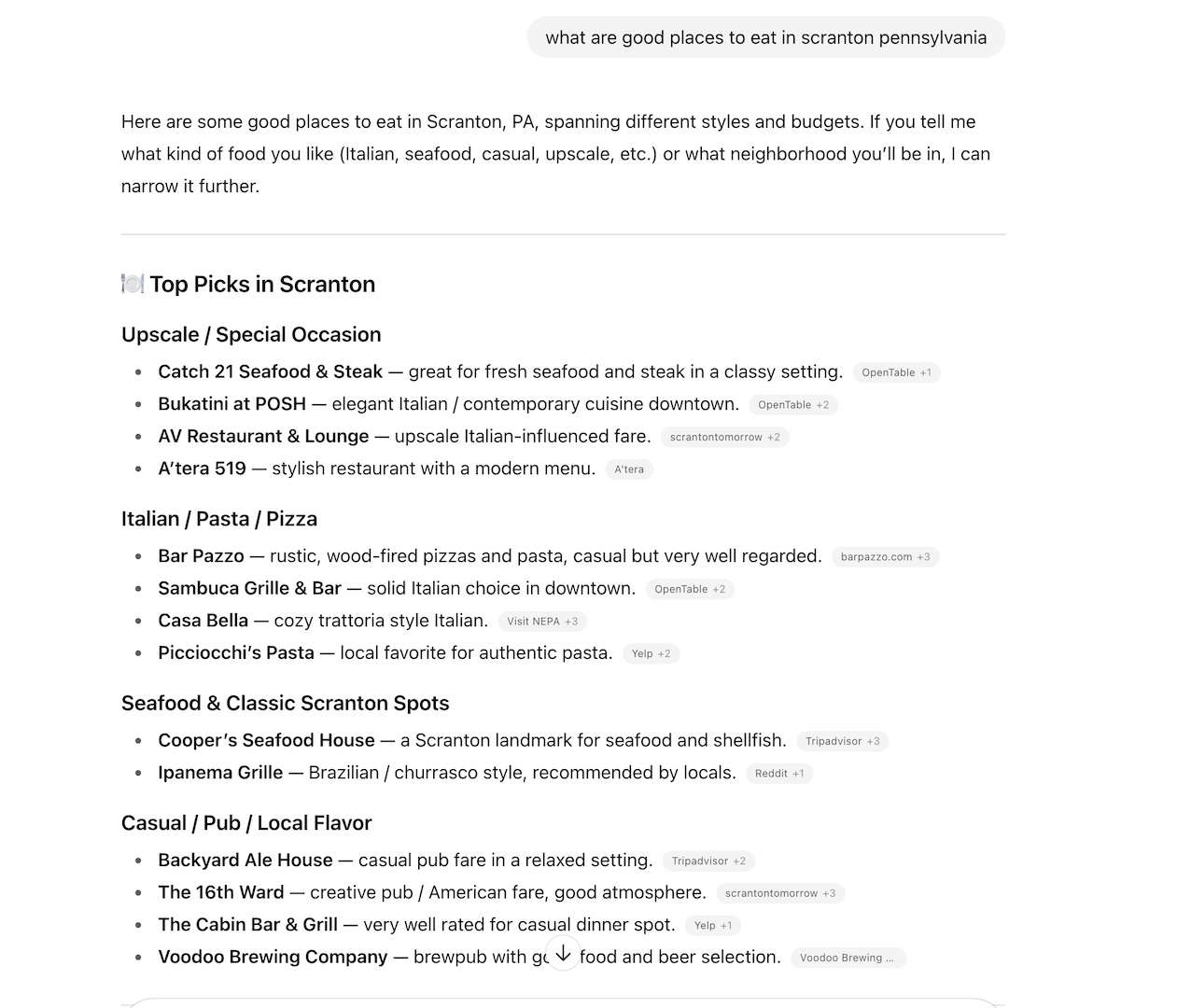 Key Differences: Local SEO vs. GEO
Key Differences: Local SEO vs. GEO
- AI often favors local authority. Small businesses with niche expertise are cited more often than large, generic sites.
- Search results are more conversational. A user might type, “Who’s the best pest control company near Wilkes-Barre?” and get one or two direct business mentions.
- AI recommendations convert faster. Being cited in an AI answer builds trust instantly, whereas Google results still require users to do their own research. AI results are more direct, and users assume they are better vetted.
For these reasons, local businesses cannot ignore the impact that GEO will have in the future.
How Local Businesses Can Start Ranking for GEO Local Search
Local businesses should leverage many of the same best practices of SEO to show up in local AI results, with a particular emphasis on building trust signals.
For helpful information on showing up in informative results as a citation or mention, read our guide on How to Show Up in ChatGPT and Generative AI Results.
1. Provide Clear Schema Information
Schema markup (structured data) plays an important role in helping search engines understand the context of your business and its content across the web.
In terms of AI results, the data is a little more unclear, but chatbots like ChatGPT seem to rely on schema markup to help them understand local business data, such as reviews, business hours, and other important context. This is verified by ChatGPT itself and can be inferred through its heavy use of Bing’s index for its web crawlers.
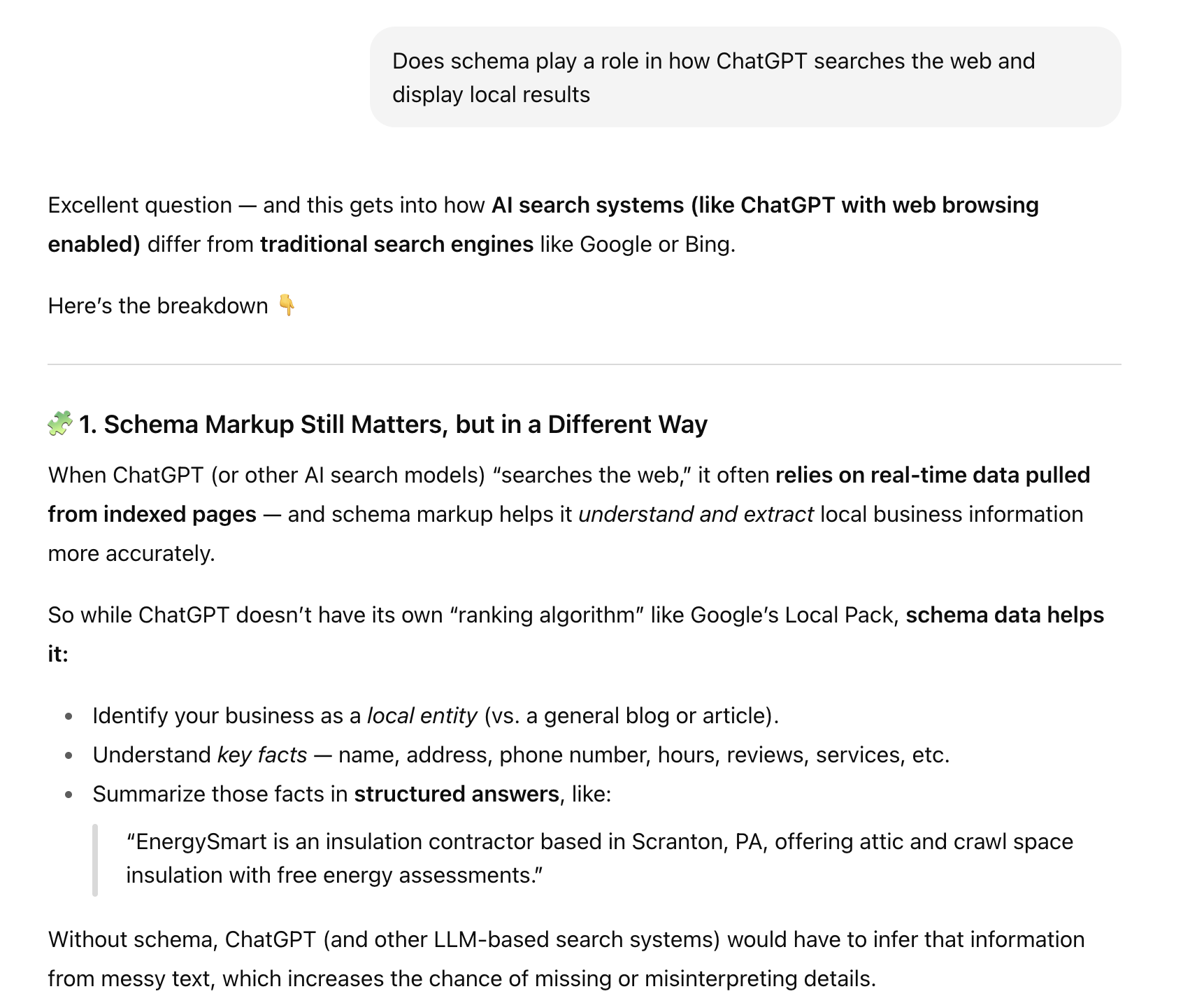 The more specific your structured data, the better it will perform in AI search results. Use schema markup to distinguish the following characteristics of your business and its content:
The more specific your structured data, the better it will perform in AI search results. Use schema markup to distinguish the following characteristics of your business and its content:
- NAP data (name, address, phone number): Be specific when it comes to service areas, as this plays a big role in how far geographically you will rank in GEO/SEO results.
- Reviews: Encourage specificity and customers to report outcomes. This helps provide actionable data for chatbots to display to users.
- Services: Write specific data for all services or products your business provides.
- FAQs: Employ FAQs at the end of content and mark with structured data to help increase your chances of showing up in contextualized results and as a citation.
Generally, the more structured data you employ, the higher your chances of ranking in SEO and GEO results.
2. Acquire Backlinks on Relevant Directories
Since chatbot searches are fairly limited in their index, they tend to rely heavily on review aggregate sites and directories for search results, such as Yelp, OpenTable, and the Better Business Bureau.
For example, when I searched for the “best contractors in Scranton, Pennsylvania,” the overwhelming majority of results came from the Better Business Bureau and Yelp.
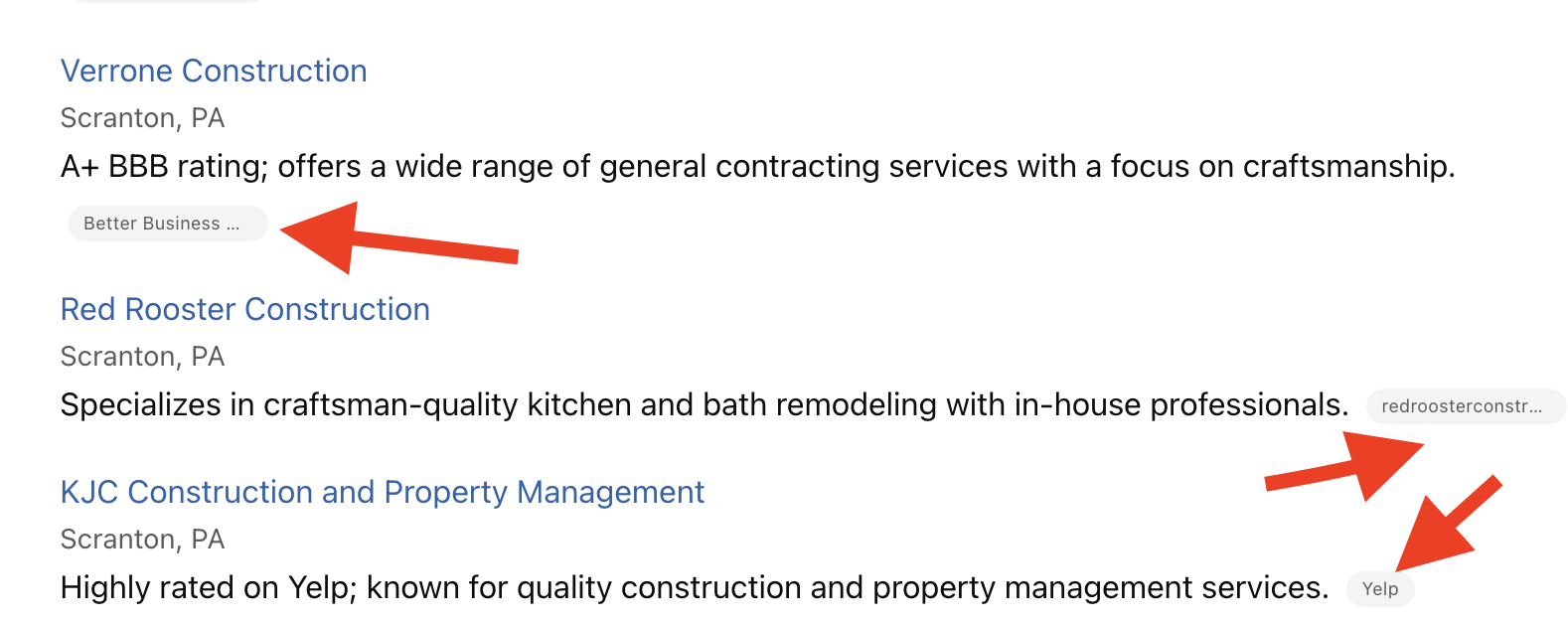 Since chatbots rely heavily on trusted domains, such as Yelp and the BBB, it’s essential to create active profiles and cultivate reviews on these directories to improve your search visibility.
Since chatbots rely heavily on trusted domains, such as Yelp and the BBB, it’s essential to create active profiles and cultivate reviews on these directories to improve your search visibility.
3. Build Trust with Reviews
The keyword when it comes to ranking in AI results is building trust. However, since AI platforms like ChatGPT and Perplexity don’t have very sophisticated ranking algorithms, they rely heavily on trust signals, such as reviews across Google and directories.
As previously stated, it’s not enough to just acquire reviews; the text of the review itself becomes essential.
Encourage users to write detailed, task-oriented information, such as “service was great” or “booking process was instantaneous.” These contextual signals help reinforce trust with AI chatbots, which will increase your chances of ranking in searches long-term.
4. Provide Detailed, Quotable Content
Whereas traditional search algorithms were advanced enough to rank content using meta tags and little information, AI chatbots require a lot of context when it comes to understanding and ranking your content.
The key to ranking content within GEO results is to write with the mindset of creating excratable, quotable information. It’s in the nature of chatbots to provide as clear of answers as possible and to mimic human speech.
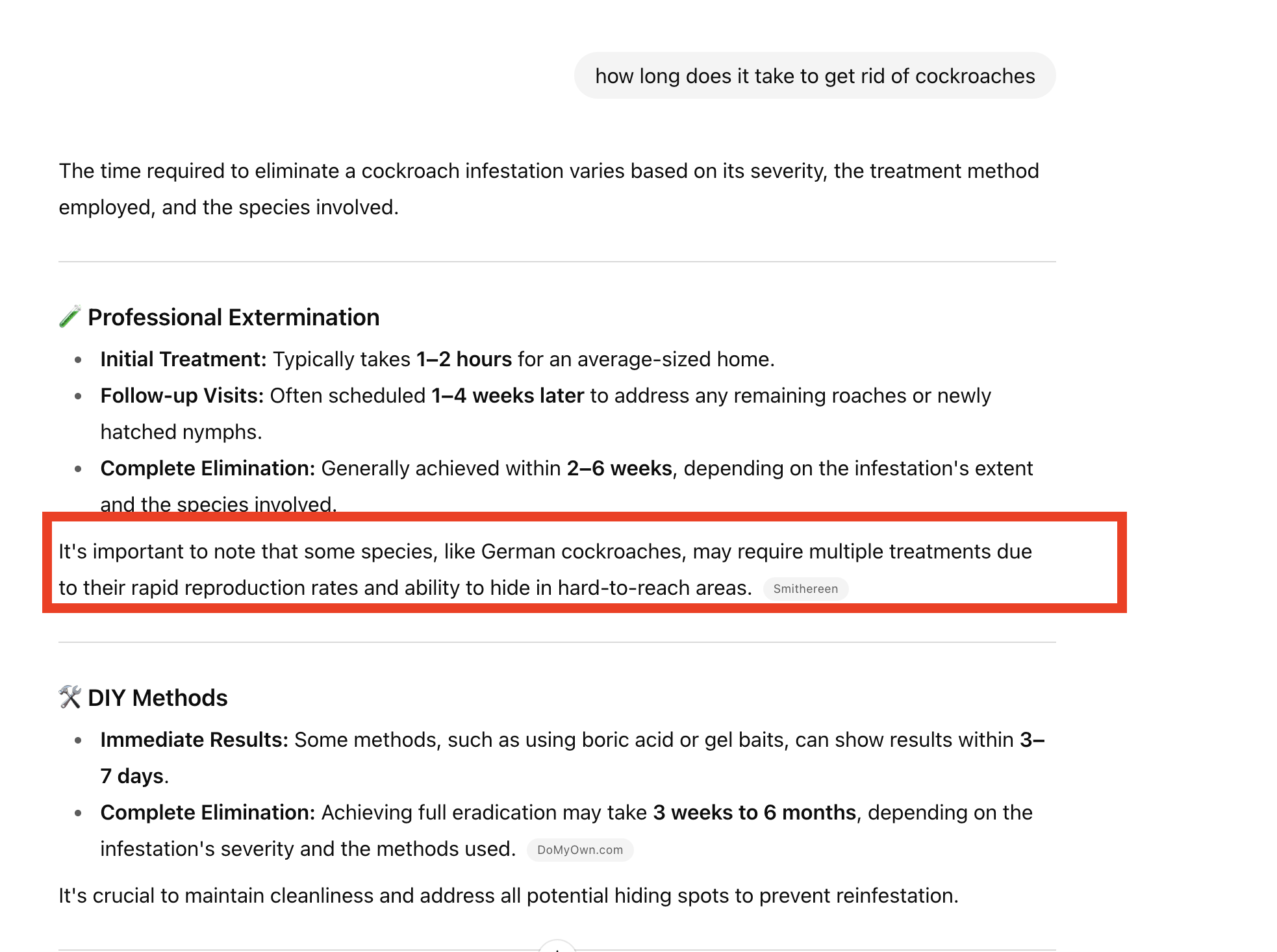 Here are a few examples of how to take traditional content and make it more specific for local GEO results.
Here are a few examples of how to take traditional content and make it more specific for local GEO results.
Location/Service Information
Example content: Emergency plumbing services available within one hour of contact within 15 miles of Scranton, Pennsylvania. Services include fixing clogged pipes, leaks, poor water flow, and replacing pipes.
Answering User Questions
Query: What is a pest inspection? “A pest inspection is a detailed check for insects or rodents in your home. It matters because it prevents hidden damage and health issues.”
Providing Structured Content Guides
Example (pest control): A guide on “Rodent Control” should include H2s for: “Signs of Rodents,” “Health Risks,” “Prevention Tips,” and “Professional Treatment Options.”
How to Audit Your GEO Presence
A key and ongoing part of GEO optimization will be auditing your GEO presence and understanding how LLMs interpret your online presence.
One way to audit your business directly using LLMs may be to ask chatbots directly how your business is perceived and what services it can pull from its index.
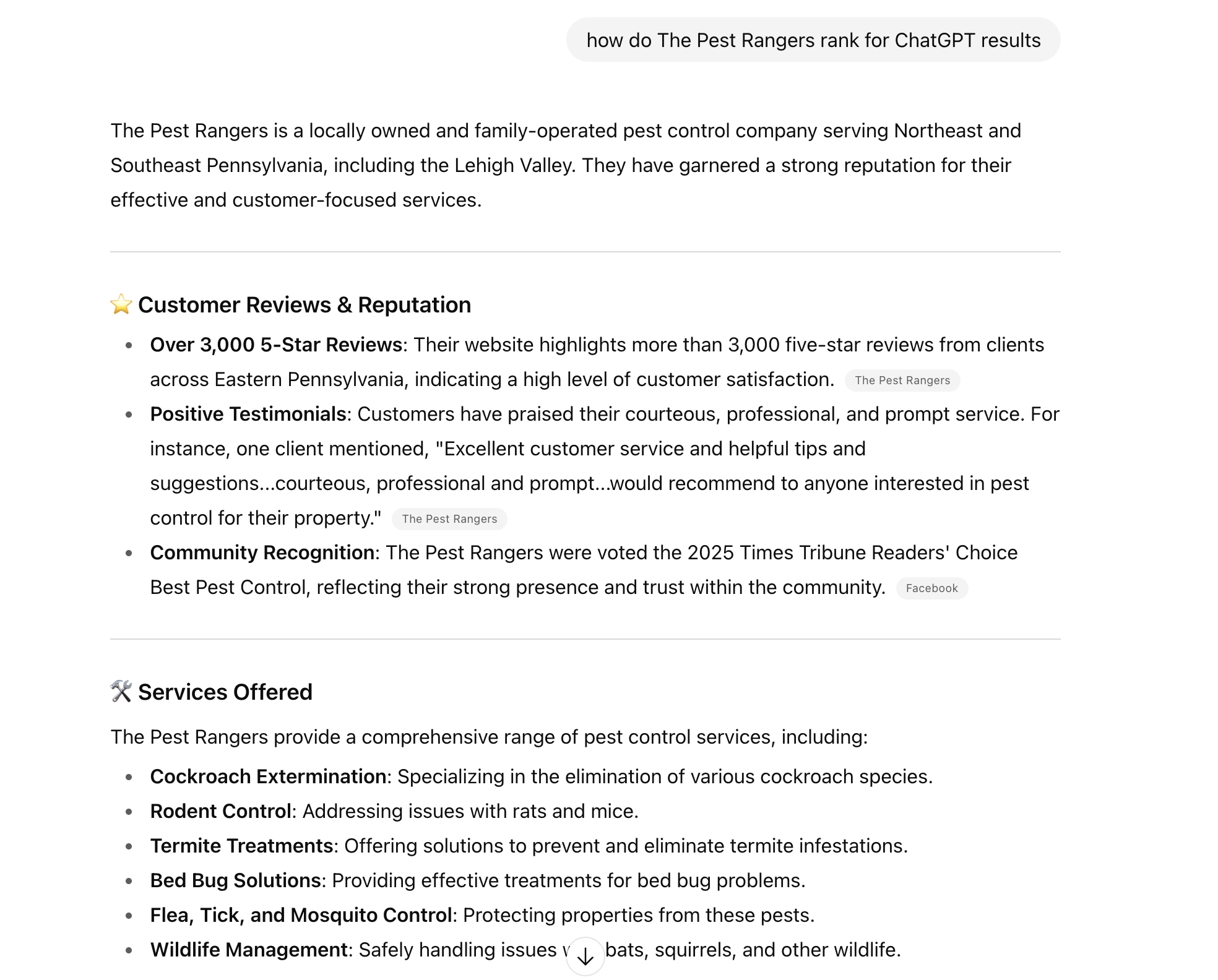 The Temperature Zero Trick provides a more detailed and complex method for extracting LLM data, but for the technical novice, using traditional SEO auditing tools with AI features may be the best strategy moving forward.
The Temperature Zero Trick provides a more detailed and complex method for extracting LLM data, but for the technical novice, using traditional SEO auditing tools with AI features may be the best strategy moving forward.
SEMrush has already begun providing tools that help you search for specific queries across several chatbots to see where you are ranking.
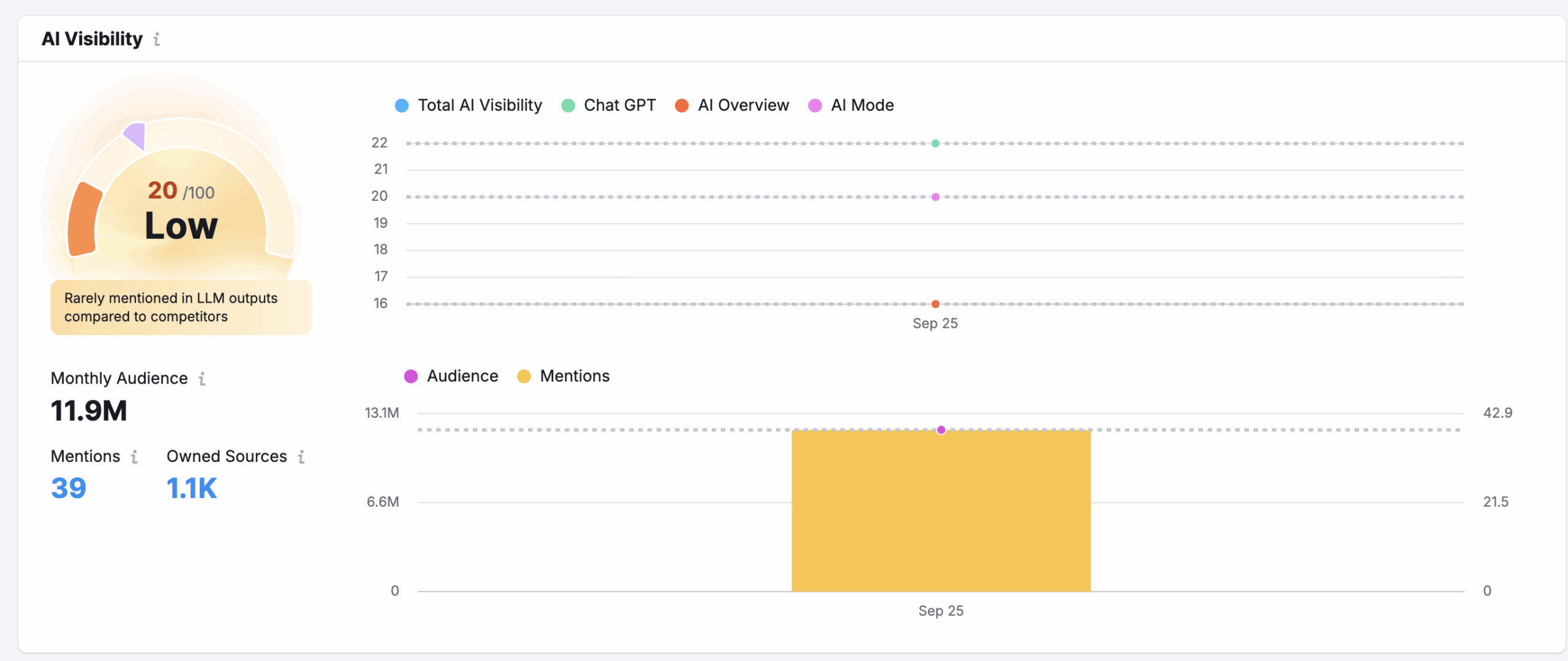 You can also use “Other” traffic data on Google Analytics 4 to see where AI traffic is coming from, as the analytics site does not have AI tracking set up yet.
You can also use “Other” traffic data on Google Analytics 4 to see where AI traffic is coming from, as the analytics site does not have AI tracking set up yet.
Generative Engine Optimization (GEO) may still be well into its infancy, but based on the rate at which AI chatbots have already evolved, we may only be a few years out until GEO takes a significant share of SEO search volume.
By being proactive with GEO, you can beat the competition and become trusted on these platforms, which will be harder to compete with in the long term.
FAQs
What does GEO mean in marketing?
GEO stands for Generative Engine Optimization. It’s the practice of improving your content so it appears in AI-powered search responses, not just traditional search results.
Is GEO replacing SEO?
No. GEO builds on SEO. SEO helps your content get found; GEO helps it get featured in AI Overviews and chat responses.
How can a small business use GEO?
Start by structuring your blogs with question-based headings, concise answers, and local expertise. This makes it easier for AI to identify and cite your content.
What tools can help with GEO optimization?
Tools like Google Search Console, ChatGPT, Perplexity.ai, and SurferSEO can help analyze visibility in both traditional and generative search.

